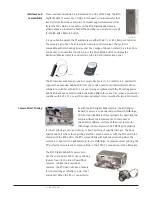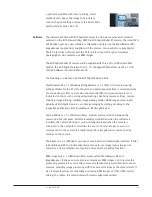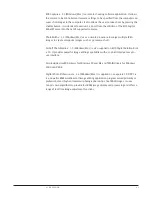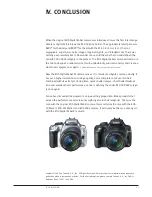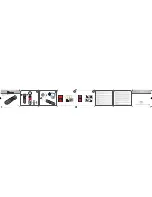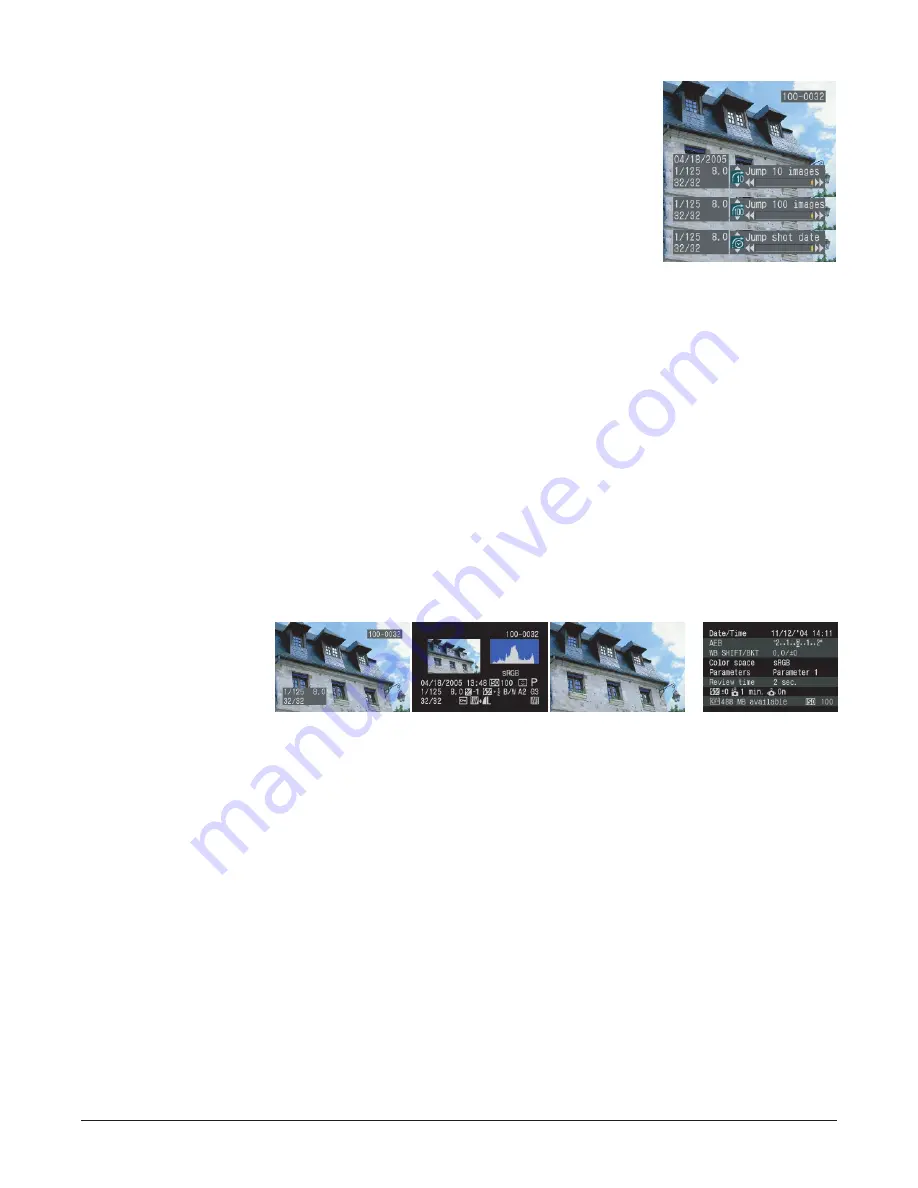
III. DISCUSSION
18
Image Display
In playback mode, a timely revision of the Jump function
enables the user to move quickly to a particular image or
group of images, no matter how far one needs to go.
Carried forward is the ability to jump 10 frames. New are
both the ability to jump 100 frames and the ability to
jump to the first image of another day’s shooting. With
the jump screen, use the top and bottom cross keys to
select the jump method, and then use the left and right keys to jump. Because the
Digital Rebel XT camera can take advantage of CompactFlash cards larger than 2 GB, the
new Jump function promises to be a real time-saver.
The XT has three different image display formats and controls to determine when or
whether such displays should occur. In a sequence shared with the EOS 20D, each time
the user presses the Info button during single image playback, the display mode will
change as follows: single image with basic information, shooting information (the color
space, WB correction and B/W indicator have been added) with reduced image size,
and single image without information (another improvement over the EOS Digital Rebel
camera). Press the left or right cross key to view the previous or the next image. In the
nine image index format, pressing the Info button switches between normal (nine images
plus basic information) and nine images without information. In the magnified zoom
viewing format, pressing the Info button during image display switches between normal
(magnified image with basic information) and magnified image without information.
Image review time right after capture is menu settable to off, 2 seconds, 4 seconds, 8
seconds, or Hold. Pressing the Info button during image review switches the Info display
on or off. Further choices are Auto play and Auto play right after shooting.
Displayed images can be rotated manually or automatically. Manually, the Playback
menu Rotate option enables clockwise rotation of 90º, 270º and 0º. Auto image rotation
is settable with the Setup 1 menu's second item. Image rotation is applied during
playback and video OUT, not during image review after image capture.
The EOS Digital Rebel XT camera’s LCD monitor has received some attention as well. It is
the same unit used on the EOS Digital Rebel camera except that a slight difference
between the brightness of the image displayed and its actual brightness as viewed on a
correctly adjusted personal computer has been resolved by changing the LCD monitor’s
gamma curve. Setup menu 1, item 3, provides a gray scale to assist in selecting one of
five levels of LCD brightness.
1. Single image (with basic information)
2. Shooting information
3. Single image (no shooting information)
Camera settings
1. Single Image (with basic information)
2. Shooting Information
3. Single Image (no shooting Information)
Camera Settings




















